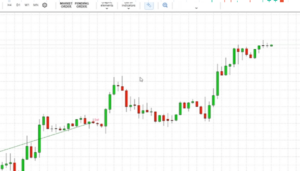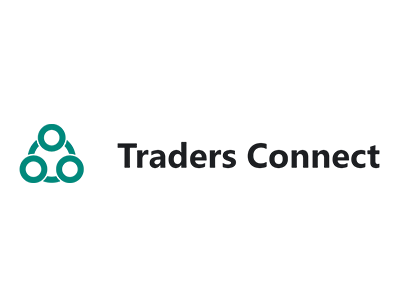Forex Tester is a software designed to simulate trading in the Forex market. It allows users to practice trading strategies without risking real money and provides a detailed analysis of trading performance. In this review, we will explore the features of Forex Tester and assess its usefulness for traders looking to improve their skills and profitability in the Forex market.
Features of Forex Tester
Forex Tester is a popular software program used by traders to test and improve their trading strategies. Here are some of the key features of Forex Tester:
- Backtesting: Forex Tester allows traders to backtest their trading strategies using historical data. This allows traders to see how their strategies would have performed in the past and can help them identify areas for improvement.
- Trading simulation: Forex Tester also offers a trading simulation feature that allows traders to simulate real-time trading conditions. This can be helpful for traders who want to practice trading without risking real money.
- Customizable indicators: Forex Tester comes with a variety of customizable indicators, including trend lines, moving averages, and Fibonacci retracements. Traders can also create their custom indicators using the software.
- Multiple timeframes: Forex Tester supports multiple timeframes, allowing traders to test their strategies across different timeframes and find the best one for their trading style.
- Strategy optimization: The software also includes a strategy optimizer that allows traders to find the best parameters for their trading strategies. This can help traders maximize their profits and minimize their losses.
Historical data
Historical data refers to past market information and price movements that have been recorded and stored for analysis. In the financial markets, historical data is crucial for traders and analysts to understand and predict future trends, as well as to test trading strategies. Historical data can include a range of information such as opening and closing prices, high and low prices, volume, and other market indicators.
Most financial markets provide access to historical data, which can be downloaded and used for analysis. Traders can use this data to backtest their trading strategies to see how they would have performed in the past. This can help traders identify areas for improvement and refine their strategies for future trades.
Overall, historical data is an essential tool for any trader who wants to make informed decisions and stay ahead in the markets.
Strategy testing
Strategy testing is the process of evaluating a trading strategy using historical data to determine its effectiveness. Traders use this technique to test their trading strategies before implementing them in real-time markets.
There are several ways to test a trading strategy, including:
- Backtesting: This involves applying the trading strategy to historical data and analyzing past performance. This helps traders identify the strengths and weaknesses of the strategy and refine it for future trades.
- Forward Testing: This involves applying the trading strategy in real-time using a demo account. This helps traders understand how the strategy performs under current market conditions.
- Paper Trading: This involves using a simulated trading account to test the strategy without risking real money. This allows traders to gain experience and confidence in their trading strategy before trading with real money.
By testing strategies, traders can identify flaws or weaknesses in their approach and make adjustments accordingly. This can help them improve their trading results and achieve consistent profitability over time.
Analysis tools
Analysis tools are software applications or platforms designed to help traders and investors analyze financial data and market conditions. These tools provide a range of features and functionalities that allow users to identify trends, patterns, and opportunities in the markets. Some common analysis tools used in financial markets include:
- Technical analysis tools: These tools use charts and technical indicators to help traders identify trends and potential trading opportunities. Examples include moving averages, Bollinger bands, and Fibonacci retracements.
- Fundamental analysis tools: These tools help traders evaluate the financial health and performance of companies, industries, or entire economies. They analyze data such as earnings reports, economic indicators, and news events.
- Sentiment analysis tools: These tools use algorithms to analyze social media, news articles, and other sources of public opinion to gauge market sentiment. They can help traders anticipate shifts in market sentiment and identify potential changes in direction.
- Charting platforms: These platforms provide advanced charting capabilities, allowing traders to create custom charts and indicators. They can also provide backtesting and strategy optimization functionalities.
- News and data services: These services provide real-time news and data feeds that traders can use to stay up-to-date with market conditions and events.
Overall, analysis tools are essential for traders and investors looking to gain an edge in the markets. By using these tools, traders can identify opportunities and make informed decisions based on data and analysis rather than emotions or speculation.
Custom indicators and scripts
Custom indicators and scripts are tools that traders can create or modify to suit their specific trading needs. These indicators and scripts are written in programming languages such as Python, Java, or C++, and can be used in various trading platforms.
Custom indicators are technical analysis tools that traders can develop to measure specific market conditions or patterns. For instance, traders can create custom indicators for measuring volatility, trend strength, or identifying chart patterns. By using custom indicators, traders can gain insights into the markets that are not provided by standard indicators.
Scripts, on the other hand, are programs that execute specific trading operations automatically. Scripts can be used to automate repetitive tasks such as opening and closing trades, sending alerts, or executing complex trading strategies. By using scripts, traders can save time and reduce the risk of errors caused by manual trading.
Custom indicators and scripts can be created by traders themselves or downloaded from online marketplaces or forums. Many trading platforms also provide tools for creating custom indicators and scripts, making it easier for traders to develop and modify their tools.
Overall, custom indicators and scripts provide traders with a more personalized approach to trading and can help them gain an edge in the markets. They allow traders to tailor their trading strategies to their unique preferences and objectives, which can result in more profitable trading outcomes.
Review
- Interface Usability: 8
- Customization Options: 10
- Analysis Features: 8
- Automation Capabilities: 10
- Price (Free/Paid): 6






















Comments